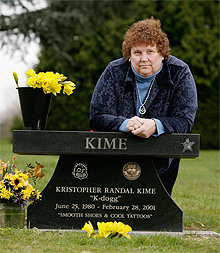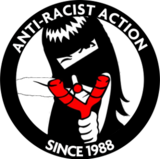Jerell Thomas was released from prison in 2010.
Shortly after his release, he reoffended.
It's been ten years since Seattle's Mardi Gras celebration disintegrated into a bloody rampage. A Kent college student died that night. And while the killer was caught, and convicted, he's out of prison and has committed new crimes.

www.king5.com
Mardi Gras killer re-offends after release
It's been ten years since Seattle's Mardi Gras celebration disintegrated into a bloody rampage. A Kent college student died that night. And while the killer was caught, and convicted, he's out of prison and has committed new crimes.
Author: KING Staff
Published: 2/25/2011 7:54:48 PM
Updated: 7:54 PM PST February 25,
2011
SEATTLE-- It's been ten years since Seattle's Mardi Gras celebration disintegrated into a bloody rampage. A Kent college student died that night. And while the killer was caught, and convicted, he's out of prison and has committed new crimes.
The violence of Mardi Gras 2001 was so fierce, so random, it left people asking -- can this be Seattle?It was Seattle. But even police commanders seemed to be in denial, holding back squads of riot clad officers for hours while the beatings continued.
Sgt. Dan Beste, now retired, was at 1st and Columbia -- pleading for permission to move in -- as victims staggered by.
They were crying and bleeding, clothes torn, asking us why didn't we do something, and we were asking the same thing, Beste said.
These pictures came to define Mardi Gras: a teenager wielding a skateboard as a weapon and then delivering a punch that took the life of Kristopher Kime.
There were people everywhere and I'm sure he never saw it coming, Looked like he was coming to the aid of a young lady that was being beaten at the time, so I guess one of the heroes of the night would have been Kris Kime, Beste said.
The image of Kime's body being carried to safety, which was caught on tape, came to symbolize police inaction that night. Beste was so upset, he wrote the Kime family an apology.
I also mailed a check of the money I made that evening because I didn't earn it, Beste said.
But if police failed to mobilize the night of the riots, they acted swiftly in the days that followed, creating a Mardi Gras task force. SPD Homicide Sgt. Gary Nelson was in charge.
All of these were very serious crimes, Nelson said. Nelson still has all 71 suspect boards the task force compiled. Kris Kime's killer was priority one.
How did you identify Jerell Thomas as the killer? we asked.
He became a potential suspect early on...because of his activity, he was walking randomly through, he knew was committing other crimes and eventually we are able to actually find the incident on the videotape, Nelson said.
Jerell Thomas was just 17-years-old. Sgt. Beste's team arrested him at a Seattle party.
And we found Mr. Thomas lying on a bed with a pet iguana on his chest petting it. I will remember that because he was very calm and it was like -- you guys need something? Beste said.
Prosecutors went for the harshest punishment possible, trying Thomas as an adult and asking for a 22-year sentence.
For someone to have as much anger as he does against people that he doesn't even know, somebody like my brother, who is so kind and loving, doesn't deserve to be out on the streets, Kirsten Kime told the judge.
But there were tears from Thomas.
The pain is still unbearable, Thomas s mother told the judge.
Sending Jerell away forever won't fix what has been done. I only want you to know that Jerell is not a throw away child, Bernita McKinion, Kime s aunt, said in court.
The judge gave Thomas 15 years in prison.But four years into that sentence, he got an unexpected break. His conviction was overturned by a State Supreme Court ruling that said assault leading to death isn't murder if there's no intent to kill.
I was shocked, literally sick to my stomach. I wanted to throw up. I don't think the injustice was to him, I think it was to us, said Kim Parks Kime, Kris Kime s mother.
With his murder conviction set aside, Thomas pleaded guilty to lesser charges of manslaughter and assault.He was re-sentenced to less than 12 years.
But he won't serve all of that time.In December 2009, Thomas walked free, eight years and ten months after killing Kris Kime.
He wasn't out long before he was in trouble again.Just two months after being released from prison, Thomas showed up at an ex-girlfriend's house in Auburn, demanded money and shoved her.
Once again he got a break. He was charged with two felonies, but pleaded guilty to three misdemeanors and spent a few months in jail. Then right before last Thanksgiving, in November 2010, Thomas was set free again.
It's frustrating for those who worked so hard to find justice for Kris Kime.
Dan Beste walks down to Pioneer Square where he sees the plaque commemorating Kris Kime s death for the first time.He reads the inscription: No greater love has a man than to lay down his life for his friends.
Kris Kime will remain a 20-year-old college student, forever frozen in time, on a plaque in the cobblestones a few yards from where he died.


:quality(70)/d1hfln2sfez66z.cloudfront.net/11-30-2019/t_0dd5c4f43d4a4eaab0718955217fe661_name_C06ABDEC6180481FA0AB04078562FEDC)

